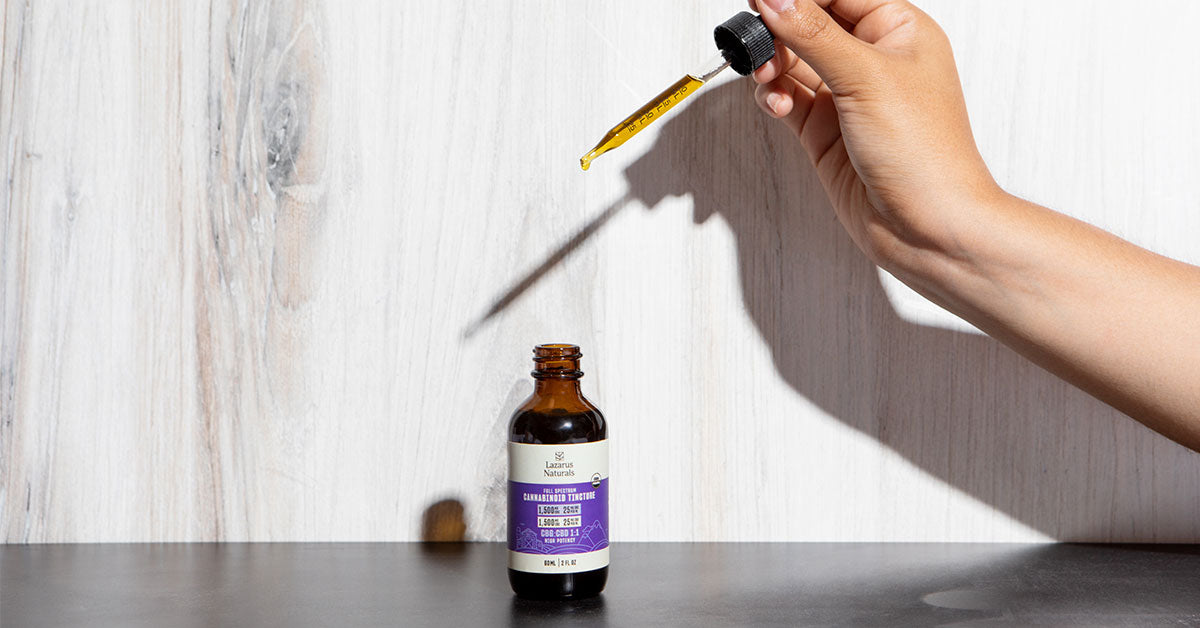
If you love CBD, it’s time to get to know CBG (cannabigerol), one of more than 100 non-intoxicating cannabinoids found in hemp plants. CBG, like CBD, offers similar benefits to the mind and body including immune support and relief of muscle soreness. CBG may brighten your mood, promote a healthy inflammation response and help address occasional nausea.
While CBG may be new to you, medical researchers have studied the therapeutic potential of CBG for a number of years. This cannabinoid is the subject of preliminary studies on a host of chronic conditions, including autism, colon cancer, multiple sclerosis, Huntington’s Disease, and others.
Our two new tinctures contain isolated CBG, which you can try on its own or combined with full-spectrum CBD oil or tincture. Both are available in 15 ml or 60 ml sizes containing 50 mg CBG/ml. We also offer a 5 gram bulk CBG isolate to make your own tinctures or edibles. Don’t forget, we always offer a 90-day return policy so there’s no excuse not to try it and see if it helps!
If you’re new to CBG, consider starting with our CBG:CBD Full Spectrum Tincture. Research shows synergistic qualities among these compounds that allow them to work better than when they are alone, dubbed the “entourage effect.” Based on anecdotal evidence, a partnership between CBG and CBD seems to offer effectiveness for maintaining a healthy systemic response to inflammation, maintaining a sense of calm and supporting recovering following exercise. In preliminary studies, evidence also suggests CBG and CBD may support healthy immune and digestive functions.
The Mother of all Cannabinoids: CBG
During early growing stages, Cannabis sativa plants contain high concentrations of cannabigerolic acid, CBGA, before THC or CBD are present. As the plant matures, CBGA is converted to THCA, tetrahydrocannabinolic acid, as well as CBDA, cannabidiolic acid, and CBCA, cannabichromenic acid. Because of its key role in biosynthesis for other cannabinoids, cannabigerolic acid is considered “The Mother of Cannabinoids.”
Much work remains to understand fully how the body uses cannabinoids to support organ functions and wellness via its endocannabinoid system (ECS). The ECS, discovered in the 1990s, exists throughout the bodies of humans, and all other animals, including birds, fish, and invertebrates such as leeches and nematodes.
Medical researchers know cannabinoids interact with people via the ECS’ complex network of receptors that provide homeostatic balance to the nervous and immune systems, as well as many other organ systems.
CBG interacts with both known sets of receptors of the ECS. They are called CB1 and CB2 and are believed to be linked with most of the body’s systems, including the central nervous system and peripheral nervous system, as well as the immune system. In humans, these receptors are abundant in the brain, immune cells, bone, liver, pancreas, skeletal muscle, blood vessels, kidneys, gastrointestinal and fatty tissue.
Disclaimer: These statements have not been evaluated by the Food and Drug Administration. This product is not intended to diagnose, treat, cure, or prevent any disease. The included studies are meant to provide a comprehensive review of the investigations into the compounds mentioned herein and by no means is this review an endorsement of the possible conclusions of these studies.
This a great, informative article. I switched from CBD to CBG. I love CBG for it totally flavorless, fast absorption and affects. This article has convinced me to try the combination CBD/CBG next purchase. Sounds like just what I have been looking for.
Thank you for this information. I am just so grateful to Lazarus for your commitment to quality, learning, and caring for others! Thank you!
I recently added CBG to my routine. I’m taking a dropper full each evening. I believe it helps me to rest better each night.
I just ordered this for my son. I’m praying it helps him. Would love to see your products made with olive oil too. My son is sensitive to coconut oil/mct. He’s also sensitive to full spectrum. So hoping this helps.
I find it interesting when you said that CBG has been studied and shown therapeutic potential for many years even if it is new to our ears.